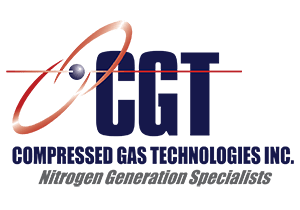
Blog
High Pressure Nitrogen – What You Need To Know
[dropcap]There are numerous industries with applications that require high pressure nitrogen. Some of those applications are gas assist – plastic injection molding; storing large volumes of nitrogen and laser cutting. Majority of companies are currently using high pressure cylinders/ dewars for these applications. There are numerous disadvantages of using high pressure cylinders/ dewars such as out during operation; cost and safety. The biggest problem is not being able to use all of the gas from the cylinder/ dewar. If you require 1000 psig and are using 2200 psig cylinders you are sending back almost half of the unused nitrogen. A way to eliminate this problem is to incorporate high pressure nitrogen boosters in house. There are typically two ways to boost the nitrogen pressure from a nitrogen generator. Air-operated nitrogen boosters and Reciprocating nitrogen boosters can help to generate high pressure nitrogen.[/dropcap]
Air-operated nitrogen boosters:
Air operated nitrogen boosters consist of a large and small area reciprocating air driven piston precisely coupled by a connecting rod. The gas piston functions in a high-pressure gas barrel section. High-pressure inlet and outlet check valves are enclosed in each gas barrel end cap. When air is supplied to the air drive inlet, the air drive section that involves a cycling spool and pilot valves provide a constant reciprocating action. To prevent air corruption from entering the gas stream, dynamic seals are used. Cooling is provided through an intercooler on the interstage line and by routing the cold exhausted drive air through an separate jacket that surrounds the gas barrel.
Advantages:
1. No oil necessary
2. Air operated – no electrical energy used
3. Ideal for dangerous areas since electricity is not needed
Reciprocating nitrogen boosters:
Reciprocating nitrogen boosters can be helpful for oil free and oil lubricated units. The application the industry requires specifically will dictate which system is best suited for that industry’s application. Reciprocating compressors use crankshaft driven pistons. They are multi-staged, and are normally driven by an electric motor. The discharge pressure of a nitrogen generator varies but normally operates between 75 psig and 150 psig. The nitrogen is directed into the intake side of the booster compressor. At this point the nitrogen will go through the various stages of compression until it reaches optimal operating pressure of the application. If the high pressure nitrogen booster is oil lubricated design the nitrogen will then enter a filtration system to get rid of any oil carryover. If even the smallest drops of oil cannot be tolerated in the process an oil-free compressor is your best option. From there the nitrogen will be stored in high pressure DOT cylinders and regulated down to the required point of use pressure.
Advantages:
1. Designed for constantly active applications
2. Best suited for industries with high flow applications
A knowledgeable and experienced nitrogen generator supplier will be able work with you to determine which technology works best for you.
Compressed Gas Technologies can answer all your questions about on-site nitrogen production – contact us!


3 thoughts on “High Pressure Nitrogen – What You Need To Know”
Comments are closed.